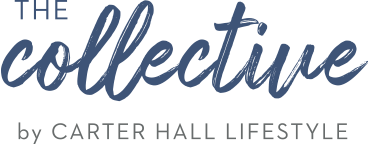
One of the most common questions I get is regarding post workout meals and snacks. I know that it can be tricky when deciding what to eat after you just had an intense workout session. My first instinct is always “Well, I just burned a ton of calories, so I can afford to have a slice of pizza or a basket of fries.” That’s one way to think about it. Or you can choose to fuel your body with the nutrients it needs to return to back to a state of homeostasis or balance.
Carbohydrates that we consume and don’t use as fuel are stored in the body in the form of glycogen. Glycogen is the storage form of glucose and is produced in the liver and stored primarily in the liver and muscle cells. When your blood sugar is low, glycogen is broken down to release glucose, providing you with more energy.
Typically, the body can store approximately 200 calories of glucose as glycogen. When you work out, your muscles use stored glycogen to fuel physical activity. In addition to glycogen, proteins in your muscles are broken down and damaged due to the microscopic tears which occurred during the stress of exercise. Therefore, it is important to consume foods after your workout which can help in the rebuilding of glycogen stores and the repair AND regrowth of muscle proteins, essentially enhancing recovery. I hate to tell you, but that bag of potato chips made with avocado oil, isn’t the best option post workout.
This brings us full circle back to the original question… “What are the appropriate meals and snacks I should be consuming post workout?” It would follow since you depleted glycogen and protein stores, you’d want to eat foods that have both of those nutrients. So let’s talk macronutrients— protein, carbs and fat! If you remember, back in January I covered each of these nutrients. If you need a refresher, head to the bottom of this page and search for the post.

Carbohydrate + Protein: Endurance Training
Post workout ingestion of complex carbohydrates is an efficient strategy to replenish lost muscle glycogen. The International society of sports nutrition (ISSN) recommends that consumption of 0.6 to 1.0 g/kg body mass of carbohydrates within the first 30 minutes of completing a glycogen depleting endurance exercise, such as cycling, and then repeating again for the next 4 to 6 hours. Or according to the position of the Academy of Nutrition and Dietetics, early intake of carbohydrate in the recovery period (~1–1.2 g/kg/h during the first 4–6 hours) is useful in maximizing the effective refueling time. This strategy has been proven to promote maximal glycogen replenishment. Additionally, a combination of both carbohydrate and protein (or amino acids) post exercise has been shown to lead to greater glycogen recovery when carbohydrate consumption is <1.2 g/kg/h. The addition of protein may help to minimize muscle damage, promote favorable hormone balance and accelerate recovery from intense exercise.
Timing and distribution of meals— time of day considerations
Recent studies have proven that the time of day the majority of energy is consumed may effect one’s health, weight (loss or gain) and body composition. One specific study found that greater weight loss and changes in body composition occurred when a majority of calories were consumed in the morning; however, hight amounts of fat- free mass were lost as well. Therefore, it is important to evenly spread out calories across the day, avoiding extended periods where no food is consumed. It is important for me to mention that current research hasn’t focused on how evenly distributed meal patters influence body composition or lean body mass. Further research is needed.
In regards to timing, several recent studies have examined consuming isocaloric diets over the period of the day— six meals per day vs three meals & two snacks, for example. What researchers have found is that there are no differences between groups in weight loss, body composition, serum hormones, and metabolic markers. However, when caloric restriction is employed and total energy intake is controlled, meal frequency can indeed influence weight loss and improving of one’s body composition. The ISSN’s portion is that greater meal frequency may favorably influence weight loss and body composition changes if used in combination with an exercise program for a short period of time. However, it is important to note that more research is needed in this area.
Fluids
Throughout the day its important to stay hydrated and this point is especially true during bouts of exercise. According to the Academy of Nutrition and Dietetics, lemonade-colored urine is a sign of appropriate hydration, while dark colored urine, indicates dehydration. Dehyrdation can cause low energy and muscle cramps or spasms during workouts. To replace fluids (water + electrolytes) lost through sweat during exercise, its important to replenish fluids during & post workout.
Recommended fluid amounts:
17-20 ounces of water two hours prior to exercise
7-10 ounces of fluid every 10 -20 minutes during exercise
16-24 ounces of fluid for every pound of body weight lost after exercise
Examples of post workout meals/ snacks ideas:
Meals:
Breakfast— Oatmeal, whey protein, banana and almonds.
Lunch— Tuna salad sandwich on whole grain bread w/ grilled veggies.
Dinner— 4 ounces of protein* with a baked sweet potato and sautéed spinach.
*Can be fish, poultry, steak or veggie substitute
Snacks:
An apple or pear with 1 tablespoon of nut butter
2 tablespoons of dried fruit and 1 tablespoon of raw, unsalted nuts
¾ cup of Greek yogurt with 1 tablespoon granola and ½ cup of berries
Now go and #livenourished!
Stephanie
References:
Kerksick, C., Harvey, T., Stout, J., Campbell, B., Wilborn, C., Kreider, R., . . . Antonio, J. (2008). International Society of Sports Nutrition position stand: Nutrient timing. Journal of the International Society of Sports Nutrition, 5(1), 17. doi:10.1186/1550-2783-5-17
Nutrition and Athletic Performance. (2016). Medicine & Science in Sports & Exercise, 48(3), 543-568. doi:10.1249/mss.0000000000000852


